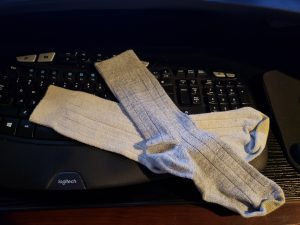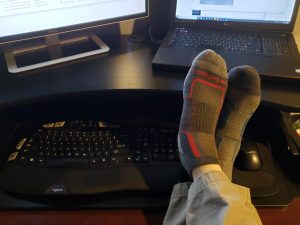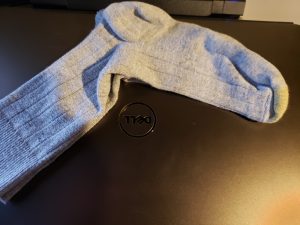Anyone with kids can relate. Or, individuals who believe there are gremlins in the laundry room, swiping one sock at a time until you’re left with just one of a pair.
I, myself, have three wonderful teenage boys. However, when it comes to my socks, I must manage them differently. It seems the more I try to manage my socks, the more they seem to show up in some of the weirdest places. I have dress socks for work, short socks in case I get motivated to go hiking or workout. Trying to find socks when I need them can be challenging and I end up just grabbing a couple if the match or not.
When it comes time to field day the house (military term for “detailed cleaning”) I find my lost socks in different rooms, drawers, under beds, and even mixed in with my wife’s socks. Sometimes, I find myself trying to put on socks that don’t quite get over my toes. It’s as bad as attempting to put on pants that are about 8 sizes too small.
How does this relate to Asset Management? Well, consider your socks the asset and the drawers and rooms as technology to maintain and track the assets. This technology may be Active Directory, SCCM, Snow Software, Aspera, Flexera, Raynet, Tanium, etc. There are a lot of great tools out there. Think of your kids and spouse the users of technology at different levels of administration. Examples would be your system administrators, software asset managers, SME’s, help desk, etc. With the end goal being, to not buy more socks when you have plenty and only replace the ones with holes in them.
Enterprises today leverage multiple technologies for different things that must come together at some point and be rationalized. When doing so, it can be extremely hard to identify what the true source of information is. When merging technologies to provide data on software and hardware assets, it is difficult to identify what technology is the true source. Some rely on Active Directory, SCCM, ServiceNow or their Software Asset Management tools or all the above. Each of these, and many others, collect a significant amount of data. But what happens when employees are offline for a significant amount of time, or no longer working with the company? Think about how often you notice data loss, or think you do. How did the systems get to a point where it is purging information about devices from one system, quarantined in another, and inactive or purged from others? Then BLAM! There’s an audit, or the next version of Java is no longer free, and you must do projection costs on the expense of moving forward. The SAM tool is reviewed, but the applications are not installed. Results from SCCM show it installed in multiple devices. The result is calling the user to  verify if it is installed and if they use it at all. Like trying to find a pair of dress socks looking in all the usual places to find a single match before work. Different rooms, different dressers. Where the hell are my socks? Wait a minute, why are my dress pants crammed into my 14-year old’s drawer? That is unexpected.
verify if it is installed and if they use it at all. Like trying to find a pair of dress socks looking in all the usual places to find a single match before work. Different rooms, different dressers. Where the hell are my socks? Wait a minute, why are my dress pants crammed into my 14-year old’s drawer? That is unexpected.
Or maybe it’s a compliance check tasked with the job to compare compliance data with what is in the environment. So, where do you go, SCCM, AD, Snow, Tanium? Then the realization hits, my pants are not passing my knees because they are too small. Or, it’s like the feeling when you get to the office and realize you spilt coffee on your pants on the way in. But that’s ok. The socks don’t match anyway. We have all been there. If you haven’t, get some kids and experience it.
The thing is, one can’t wait for the next load and hope that a match is  found. Six pairs of matching socks went, six better come out. When the load is done, we usually know who is folding and putting away the socks. So, when we go to find our socks, we know the likely places to find them. Unless the dog is involved, then it’s anyone’s guess.
found. Six pairs of matching socks went, six better come out. When the load is done, we usually know who is folding and putting away the socks. So, when we go to find our socks, we know the likely places to find them. Unless the dog is involved, then it’s anyone’s guess.
When looking at SAM tools, deployment tools, CRM’s, it is imported to know how they integrate with each other. Identify the primary source of data. Make sure that you don’t have silos between the teams and the systems are maintained and data is validated on a regular basis. It is key when rationalizing systems to fully understand the time lines data goes into quarantine, marked inactive or is purged out of systems. Verify that the teams are taking and as much automation is in place. As systems are upgraded, automation needs to be reverified. This is where enterprises get into trouble. It may be, the rationalization from multiple systems becomes your true source and is injected into your CRM.
There are a lot of good systems out there to manage assets. However, I have not seen one that does everything well. Educate the teams to identify data loss. Don’t put all your socks in a basket and expect that they will all have a match. It doesn’t happen.
If you enjoyed this, stay tuned next time when I vent about taking my clothes to be dry cleaned and the cloud.



